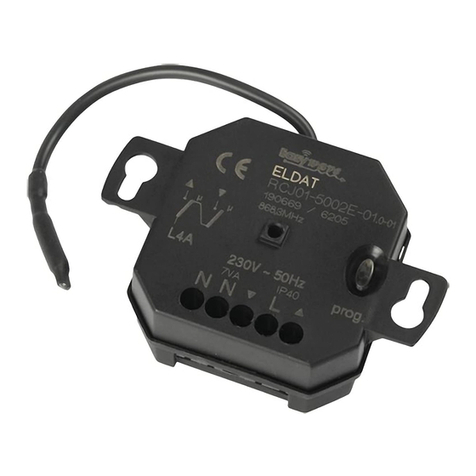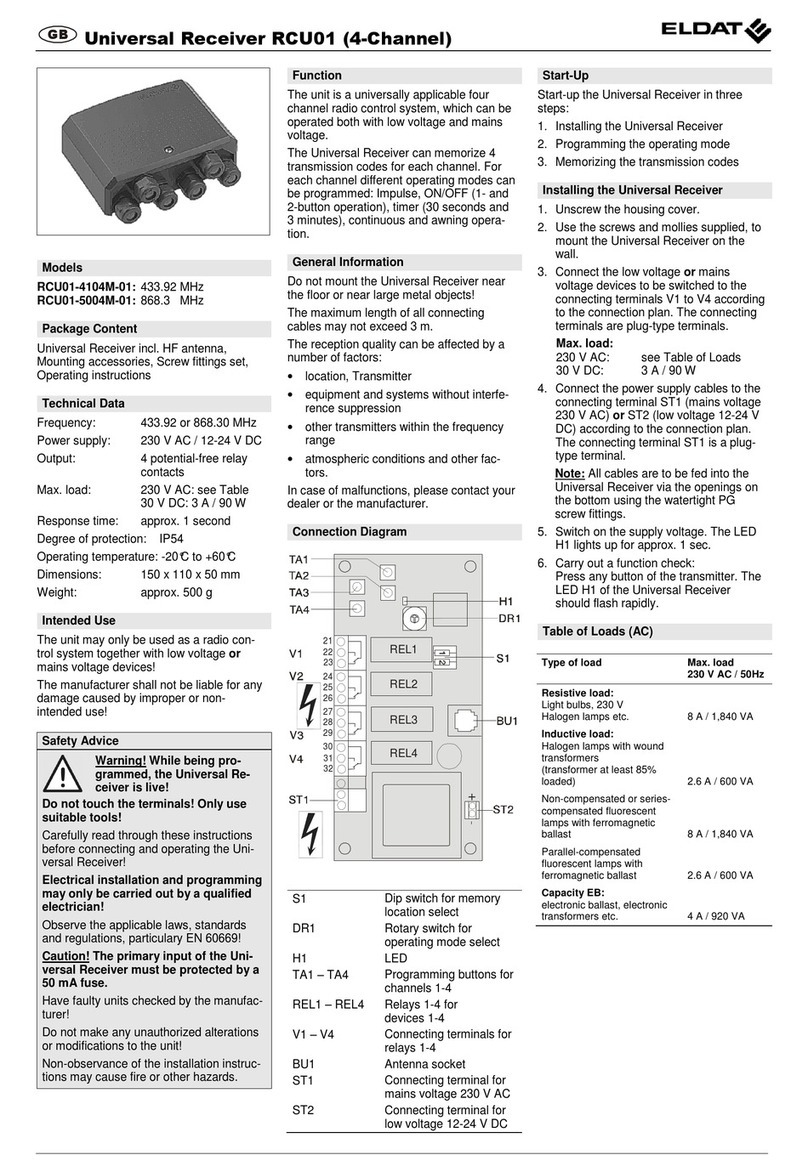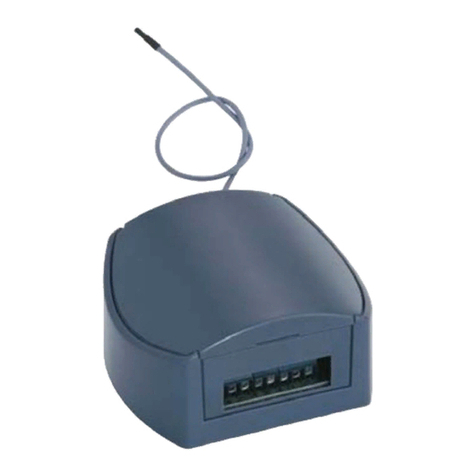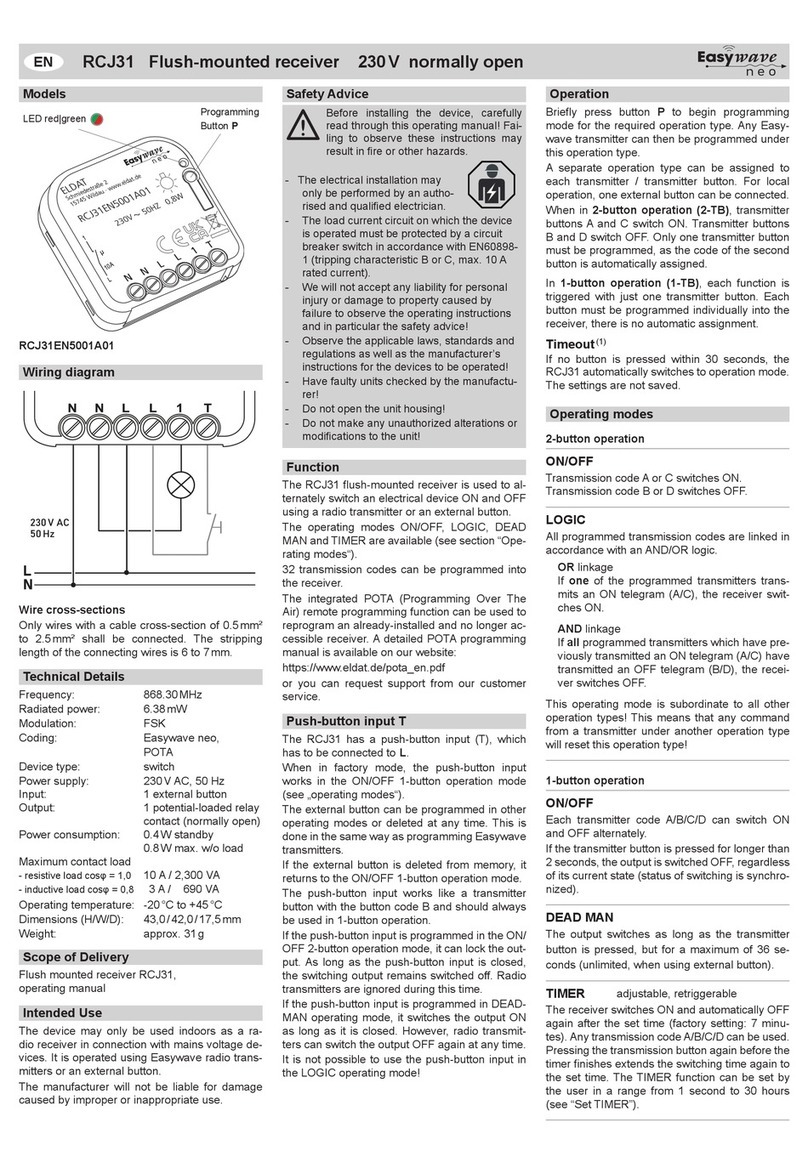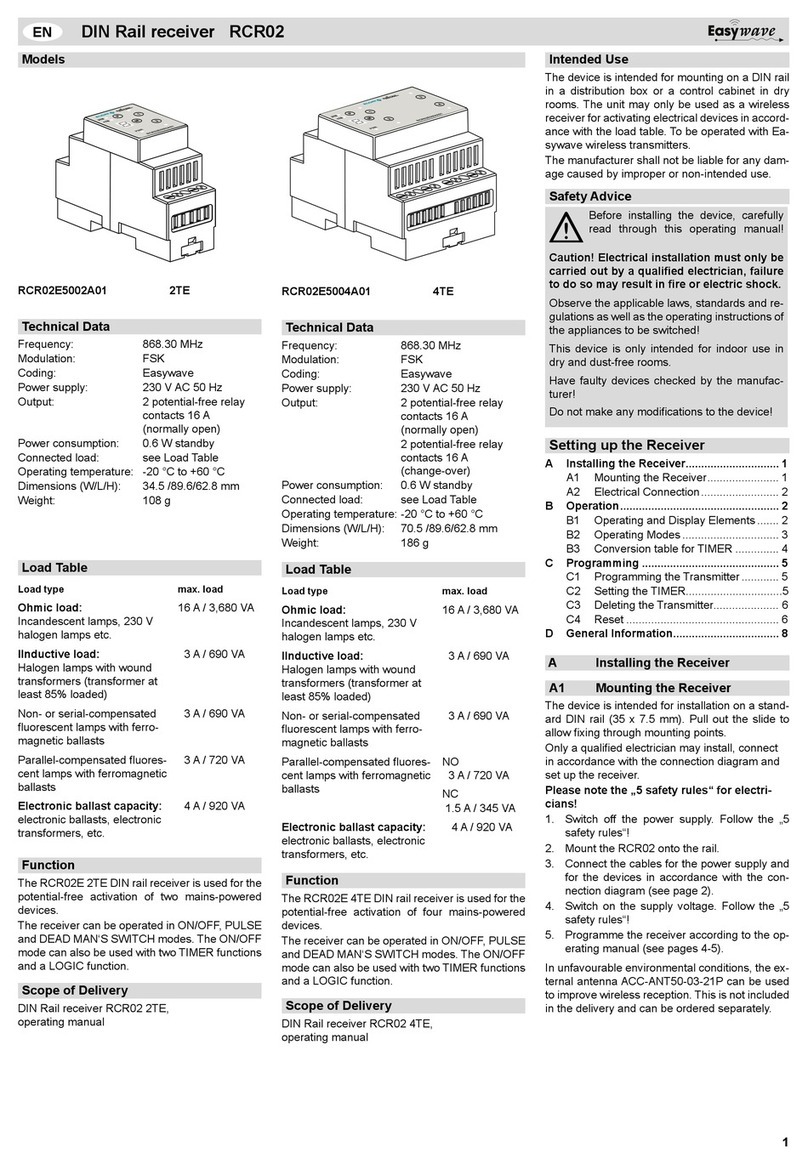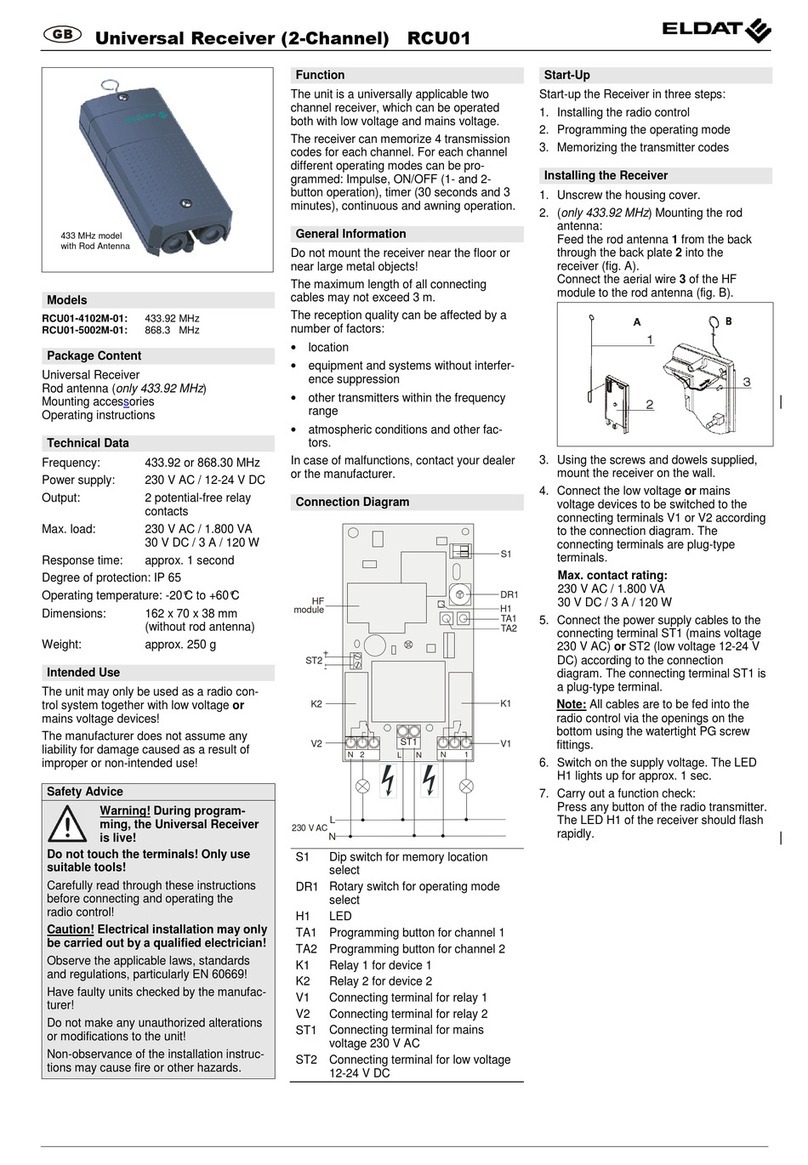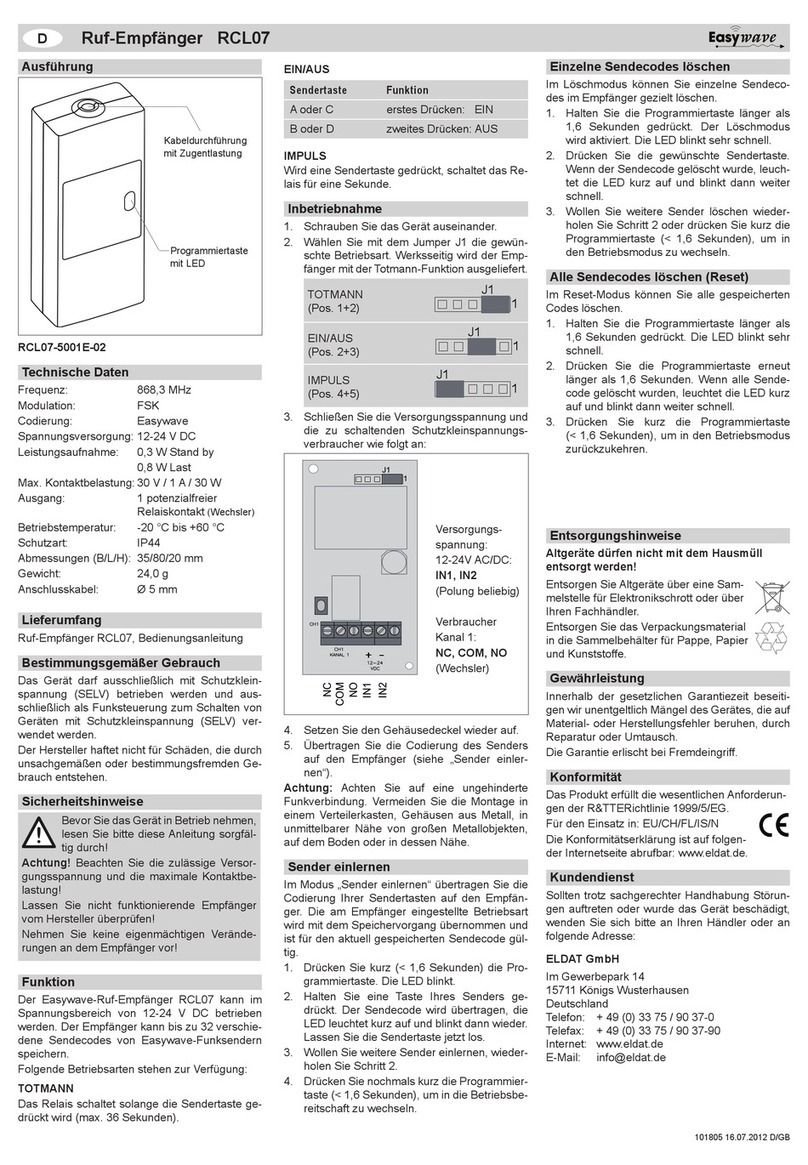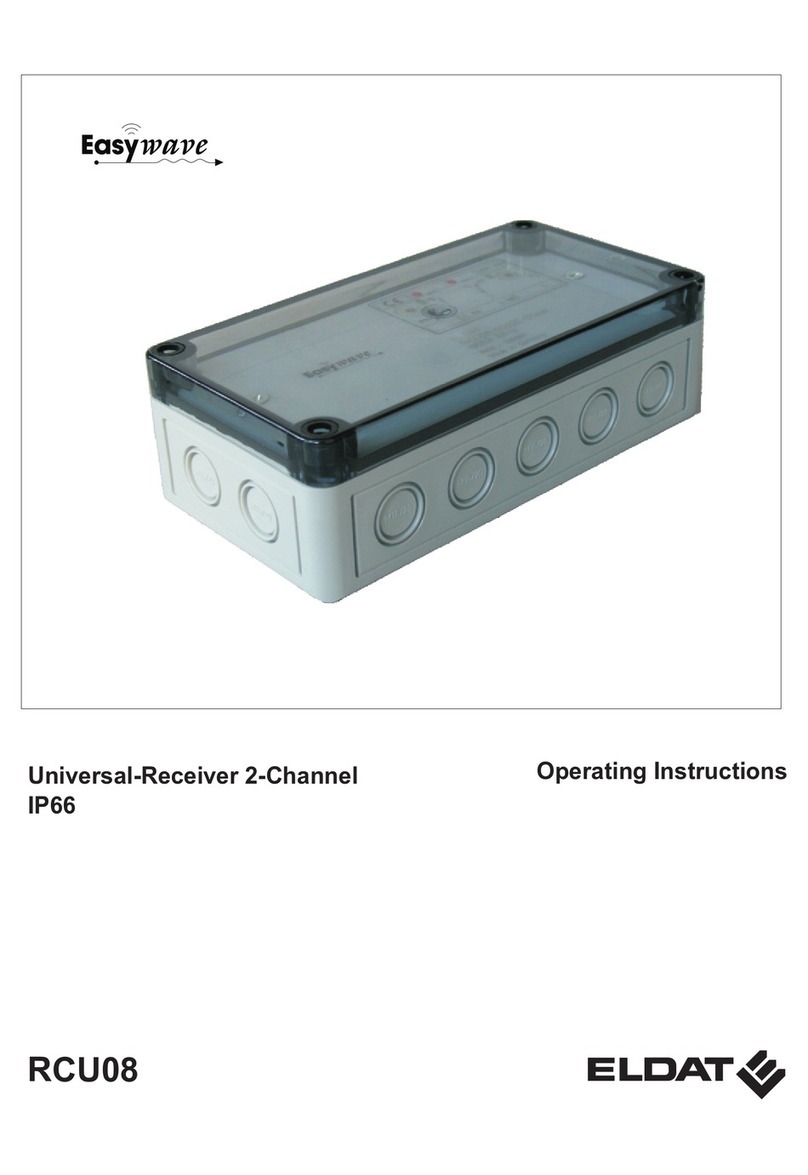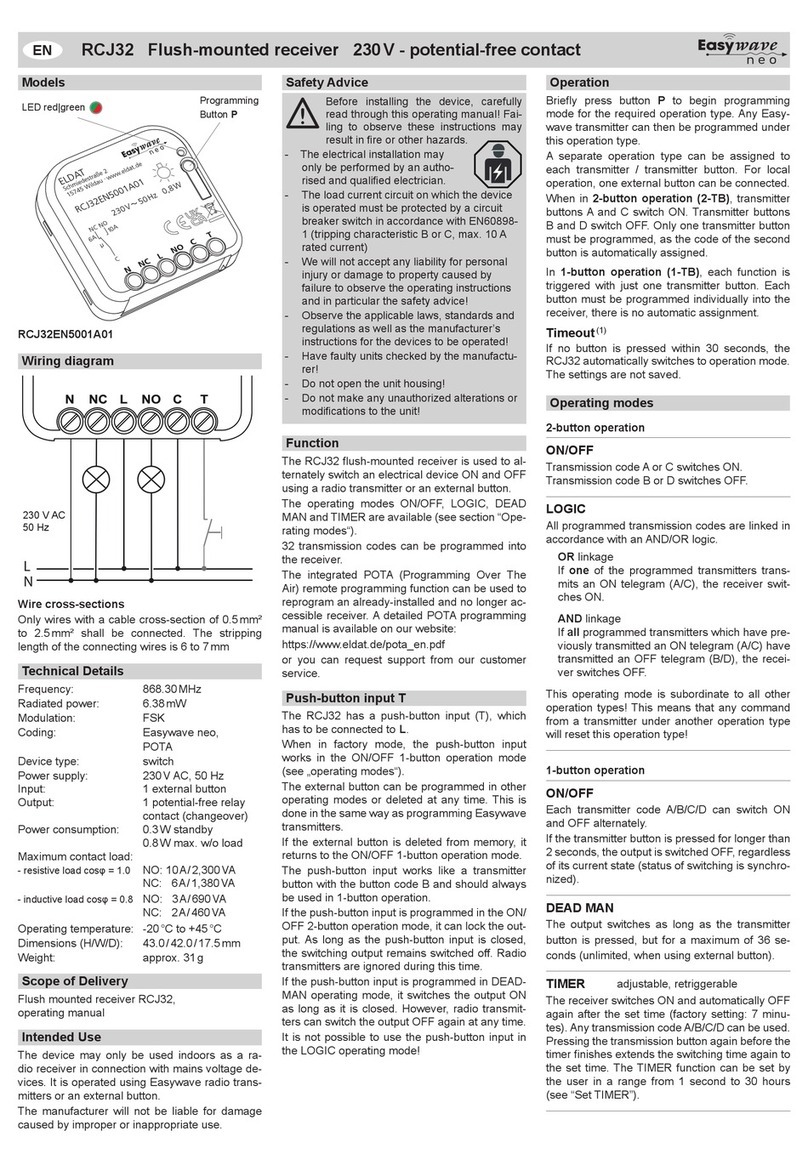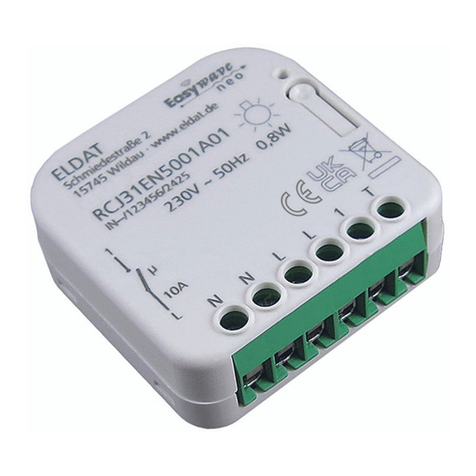
UM74963B0917 GB
5. If necessary, connect the external im-
pulse buttons as follows:
- Impulse button 1 (for relay 1): CH1
- Impulse button 2 (for relay 2): CH2
Note: The external impulse buttons work
in the selected operating mode.
Note: (only RCL04) All cables are to be
fed into the receiver via the opening on
the bottom using the watertight PG screw
fitting.
6. Transfer the codes of the transmitters to
the receiver (see section “Memorizing the
transmission codes (Programming)“).
7. Re-install the housing cover.
Memorizing the Transmission Codes
(Programming)
In the “Memorizing the Transmission Codes”
mode you can transfer the codes of your
transmitter buttons to the receiver.
The selected operating mode is adopted as a
result of the memorizing process and applies
to the transmission code currently memo-
rized. A total of 32 transmission codes can
be memorized.
Operating modes „Dead man’s mode“
and “Impulse (1 second)”
1. Briefly (< 1.6 sec.) press the program-
ming button TA1 (for channel 1) or TA2
(for channel 2). The programming mode
is activated. The LED flashes.
2. Press and hold the transmitter button. If
the code has been memorized, the LED
lights up for approx. 4 sec. and then
flashes again. Release the transmitter
button.
3. Repeat step 2 with the other transmitters.
4. Briefly (< 1.6 sec.) press the program-
ming button TA1 or TA2 in order to return
to the operating mode.
Operating mode „Roller blind motor con-
trol“
1. Briefly (< 1.6 sec.) press the program-
ming button TA1. The programming
mode is activated. The LED flashes.
2. Press and hold the transmitter button A or
C. If the code has been memorized, the
LED lights up for approx. 4 sec. and then
flashes again. Release the transmitter
button.
Note: The code of the corresponding
transmitter button B or D will be assigned
automatically.
3. Repeat step 2 with the other transmitters.
4. Briefly (< 1.6 sec.) press the program-
ming button TA1 or TA2 in order to return
to the operating mode.
Operating mode „ON/OFF“
1. Briefly (< 1.6 sec.) press the program-
ming button TA1 (for channel 1) or TA2
(for channel 2). The programming mode
is activated. The LED flashes.
2. Press and hold the transmitter button A or
C. If the code has been memorized, the
LED lights up for approx. 4 sec. and then
flashes again. Release the transmitter
button.
Note: The code of the corresponding
transmitter button B or D will be assigned
automatically.
3. Repeat step 2 with the other transmitters.
4. Briefly (< 1.6 sec.) press the program-
ming button TA1 or TA2 in order to return
to the operating mode.
If all memory locations are occupied, the
LED flashes rapidly for approx. 4 sec.
Note: Even in case of longer power failure
programming remains.
Deleting Specific Transmission Codes
In the Delete mode you can delete specific
transmission Codes memorized by the re-
ceiver.
1. Keep the programming button TA1 (for
channel 1) or TA2 (for channel 2) pressed
for more than 1.6 sec. The delete mode is
activated. The LED flashes rapidly.
2. Press the selected transmitter button. If
the code has been deleted, the LED
lights up for 4 sec. and then flashes again
rapidly.
Note: In the operating modes „Roller
blind motor control“ and „ON/OFF“, the
code of the corresponding transmitter
button is also deleted.
3. Repeat step 2 with another transmitter or
briefly (< 1.6 sec.) press the programming
button TA1 or TA2 in order to return to
the operating mode.
Reset (Deleting Memory Completely)
In the Reset mode you can delete all codes
memorized by the receiver.
1. Keep the programming button TA1 or
TA2 pressed for more than 1.6 sec. The
delete mode is activated. The LED flash-
es rapidly.
2. Press the programming button TA1 or
TA2 again and keep it pressed for more
than 1.6 sec. If the memory has been de-
leted completely, the LED lights up for
4 sec. and then flashes again rapidly.
3. Briefly (< 1.6 sec.) press the program-
ming button TA1 or TA2 in order to return
to the operating mode.
Waste electrical products should not be
disposed of with household waste!
Dispose of the waste product via a
colle
ction point for electronic scrap
or via your specialist dealer.
Put the packaging material into the
recycling bins for cardboard, paper
and plastics.
Within the statutory warranty period we
undertake to rectify free of charge by repair
or replacement any product defects arising
from material or production faults.
Any unauthorized tampering with, or modifi-
cations to, the product shall render this
warranty null and void.
Hereby, ELDAT GmbH declares
that the radio equipment type
RCL03/RCL04 is in compliance
with Directive 2014/53/EU.
The full text of the EU declaration
of conformity is available at the
following internet address:
www.eldat.de
Frequency: 868.30 MHz
Modulation: FSK
Radio telegram: Easywave
Supply voltage: 12-24 V AC/DC
Contact rating external push-buttons:
approx. 5 mA
Current consumption at 24 V DC / 2-ch:
- Transmitter operation: approx. 50 mA
- Impulse button operation: approx. 60 mA
Degree of protection: RCL03: IP 20
RCL04: IP 65
Output: 2 potential-free
relay contacts
Max. contact rating:
- AC: 24 V / 1 A / 24 VA
- DC: 30 V / 1 A / 30 W
Operating temperature: -20°C to +60°C
Dimensions: RCL03: 70 x 64 x 35 mm
RCL04: 72 x 114 x 36 mm
Weight: RCL03: ca. 50 g
RCL04: ca. 100 g
If, despite correct handling, faults or malfunc-
tions occur or if the product was damaged,
contact your retailer or the manufacturer.
ELDAT GmbH
Im Gewerbepark 14
15711 Königs Wusterhausen
Germany
Phone: + 49 (0) 33 75 / 90 37-310
Telefax: + 49 (0) 33 75 / 90 37-90
Internet: www.eldat.de
